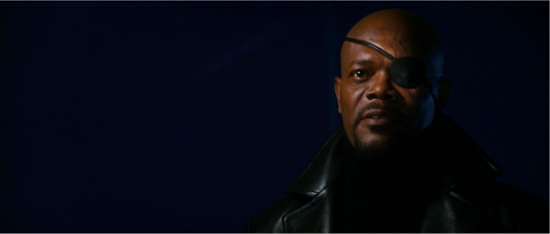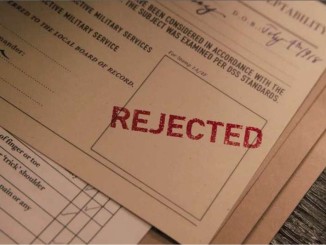The bumper or tag scene. It’s that short scene that comes after the end credits have finished, a little extra for those in the audience who have sat through the scroll list of names of the films grips, sound crew, special effects technicians and caterers. It usually doesn’t have much bearing on the preceding film, but is just a nice little Easter egg for those who stuck around.
Although cinema is over a century old, the tag scene has only come about I the last couple of decades. Up until the late-1960s, most films had their credits in the beginning, just a quick on-screen card or two to note the main crew members behind the film. Sometimes, the main cast list was reprised at the end of a film, but that was all. But as film loaders, grips, focus pullers, stand by painters, transportation captains, boom mic operators and more were added, the credits were shifted to the end of films, where they could play out while the audience left. It wouldn’t be long until someone decided that just because the credits were rolling it didn’t mean that the film was over.
Let’s take a look at the five most influential of these mid- and post-credit scenes.
When David Zucker, Jim Abrahams, and Jerry Zucker released Airplane! in the summer of 1980, they wound up rewriting many of the rules for film comedy. And one of those rules was that the laughs didn’t have to stop just because the films credits had started. Those Airplane! audience members who didn’t jump up and head for the exists the moment when Otto and his inflatable stewardess flew the TransAmerican jetliner off into a hail of fireworks were treated to a couple of gags buried with the film’s end credits crawl. (“Generally In Charge Of A Lot Of Things – Mike Finnell”, “Author of A Tale Of Two Cities – Charles Dickens”)
The topper came at the end of the credits, though with a quick little scene featuring the man in the cab who Ted Stryker (Robert Hayes) abandoned on the curbside of LAX at the beginning of the film. Although the film cuts back to him twice during its first 50 minutes, he isn’t seen for the rest of the picture. But Zucker, Abrams and Zucker hadn’t forgotten the poor soul and cut back to let us know that he was still waiting for Stryker to return to take him on his trip. But after waiting nearly the entire run-time of the film for his cabbie to come back, the now slightly frustrated man vows, “I’ll give him another twenty minutes! But that’s it!” A funny moment and one that is noteworthy as it appears to be the first time that a button scene appeared in a film.
“When In Hollywood, Visit Universal Studios. Ask for Babs.”
While not technically a tag scene, there is a joke that comes at the end of National Lampoon’s Animal House’s credits that calls back to something from the main part of the film. Specifically, the film’s closing moments revealing the futures facing members of the Delta and Omega fraternities. Martha Smith’s character of Babs is revealed to have become a tour guide at Universal Studios. At the time it was standard for Universal Studios films to have an end title card promoting their studio tour in Hollywood and Landis decided to give a last wink to any of the audience still in the theater by changing the card to read “When In Hollywood, Visit Universal Studios. Ask for Babs.”
The gag soon became one of Landis’s many signature touches; perhaps only second to his use of the phrase “See you next Wednesday.” He would use it for all of his subsequent movies made for Universal including The Blues Brothers (1980), An American Werewolf In London (1981), Coming Soon (1982), Into The Night (1985), Amazon Women On The Moon (1987) and Blues Brothers 2000. It also appears on the Animal House DVD supplement/mockumentary Where Are They Now?: A Delta Alumni Update.
One of the refreshing aspects of Ferris Bueller’s Day Off was the amount of times that Matthew Broderick’s titular character broke the fourth wall to speak directly to the audience. It was something that hadn’t really been done in cinematic comedy since the days of the Marx Brothers, Bob Hope and Ollie and Johnson’s Hellzapoppin’. It is a conceit that carries right through to after the credits when Ferris pops back on screen and tells everyone to go home. Probably not a gag that really works in this day and age of home video, but it is still a nice last moment to end the film on.
While I can find no documentation to back it up, I have to wonder if this button scene started as an improvised joke on the set. Hughes was open to improvisation and the moment where Ferris is singing “Danke Shone” in the shower grew out of Broderick practicing the song for the parade sequence while the crew was setting up the shower scene.
While not technically button scenes, there are several short scenes in the 1998 thriller Wild Things that were embedded into the closing credits crawl that revealed that what audiences thought they saw in the bulk of the film might not have been what actually happened. Which is saying something as the movie has several twists and turns.
By this time, it wasn’t completely unusual for a film to have additional material in the credits. Through the late 70s and early 80s, Burt Reynolds would customarily put shooting outtakes into the credits of his films to show how much fun the cast and crew had while making the film. It was a practice that Jackie Chan copied for his Hong Kong action films after he appeared in The Cannonball Run, but he used it to show that how dangerous many of the stunts he and his team performed really were. But Wild Things was one of the first to include material which could legitimately be called vital narrative material. (Yes, I know Ferris Bueller has the credit sequence scene with Rooney’s car getting towed and him having to hitch a ride on the bus, but it is a scene that isn’t really necessary to the story.) And in just a couple of years, the idea of narrative material at the end of the credit roll would be placed into ply by the next film on our list.
On May 2, 2008, comic book movie fans were buzzing about how Marvel Studios’ Iron Man may or may not end. Rumors had been circulating that Samuel L. Jackson had filmed a cameo for the film but early reviews didn’t mention it. It wasn’t until the first midnight screenings ended on the East Coast and folks took to the internet confirmed the existence of such a scene after the credits. Of course, the scene also opened up a flurry of new questions, most specifically, what did Jackson’s character Nick Fury mean when he referred to “The Avengers Initiative”?
The following Monday, during a quarterly earnings conference call Marvel formerly announced their plans to build an interconnected series of superhero franchise films that would culminate in one giant crossover/team-up film, The Avengers, confirming what fans were wildly speculating about over the previous 72 hours. And with only one scheduling change – Thor was originally marked to come out last summer and The Avengers was slotted for this summer – the studio has managed to keep on track for what could be considered the most ambitious bit of franchise management seen yet. And Marvel has continued to use button scenes at the end of all their films to help build that shared universe and tease the next film on their schedule. The result is the high-level of anticipation for next summer’s The Avengers even among non-comics fans.









@MonorailTravis @UniversalORL @SharknadoSyfy Read the second one: http://t.co/96B4ZXM7kJ
@thefreddyschurr Read the second one: http://t.co/96B4ZXM7kJ